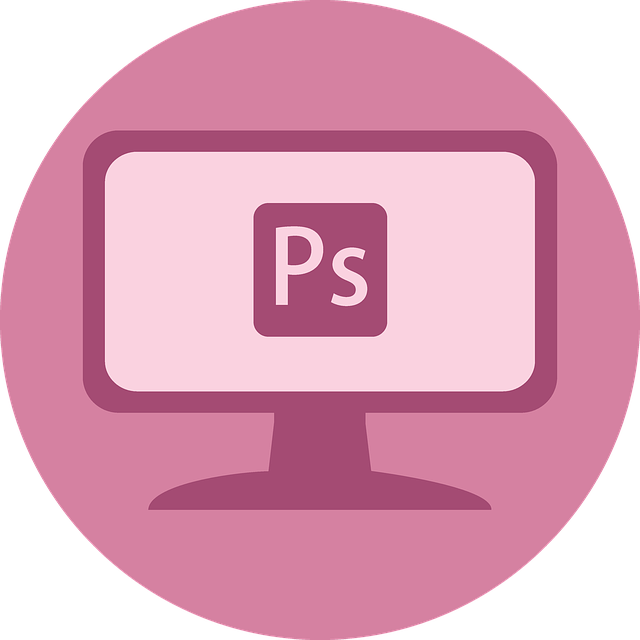Graphic Design is a dynamic field that leverages aesthetics, typography, color, imagery, and space to effectively convey messages across diverse mediums. Professional designers bridge brand identity and user experience, using tools like Adobe Creative Suite (Photoshop, Illustrator, InDesign) for high-quality outputs. They simplify complex ideas through strategic visual elements, enhancing engagement in the digital landscape. Building a strong portfolio is crucial, showcasing skills, creativity, and style to clients or employers. Specializations range from logo creation and web design to UX and art direction, with motion graphics gaining prominence.
Understanding Graphic Design: A Comprehensive Overview

Graphic Design is a multifaceted discipline that involves creating visual content to communicate messages and ideas effectively. It’s not just about aesthetics; it leverages elements like typography, color, imagery, and space to engage audiences and convey information. A well-designed graphic can capture attention, simplify complex concepts, and enhance user experiences across various mediums, from digital interfaces to print materials.
Understanding Graphic Design requires grasping its core principles and processes. This includes conceptualizing design concepts, sketching ideas, choosing the right color palettes and typography, and using software tools to bring designs to life. It’s an iterative process where feedback and revisions play a crucial role in refining the final product. By combining creativity with technical skills, professional graphic designers create visually appealing and impactful solutions that resonate with their target audiences.
The Role of a Professional Graphic Designer

Professional Graphic Designers play a pivotal role in the world of visual communication, where aesthetics meet functionality. They are tasked with translating concepts and ideas into visually compelling designs that effectively convey messages to target audiences. This involves a deep understanding of design principles, color theory, typography, and layout, coupled with proficiency in various graphic design software tools.
These designers aren’t just artists; they are problem-solvers who bridge the gap between brand identity and user experience. They collaborate with clients and teams to grasp project objectives, ensuring their designs not only meet but exceed expectations. Whether it’s crafting logos, designing marketing collateral, or developing complex user interfaces, professional Graphic Designers enhance brands’ visual storytelling, making them indispensable in today’s competitive digital landscape.
Essential Skills for Excel in Graphic Design

In the realm of professional graphic design, excelling requires a blend of artistic vision and technical prowess. At the heart of this discipline lie several essential skills that empower designers to create captivating visuals. The first and foremost skill is proficiency in various design software, such as Adobe Creative Suite (Photoshop, Illustrator, InDesign). These tools enable designers to bring their creative concepts to life, from digital illustrations and photo edits to layout designs and branding materials.
Beyond technical mastery, effective communication and a keen eye for detail are indispensable. Graphic designers must possess the ability to interpret client briefs accurately, translate ideas into visual narratives, and communicate complex concepts simply. A deep understanding of color theory, typography, and composition further enhances their work, ensuring every design is visually appealing, balanced, and aligns with brand identity. These skills, combined with a relentless pursuit of learning and staying abreast of industry trends, are the cornerstones of success in graphic design.
Tools and Software Used in Modern Graphic Design

In today’s digital age, professional graphic design is a multifaceted field that relies heavily on specialized tools and software. Designers leverage programs like Adobe Creative Suite (Photoshop, Illustrator, InDesign) to bring their creative visions to life. These industry-standard applications offer robust features for image editing, vector graphics creation, and layout design, enabling designers to craft visually appealing content.
Beyond Adobe’s offerings, emerging technologies and alternative software are gaining traction. Tools such as Sketch, Figma, and CorelDRAW provide unique advantages, catering to different workflows and preferences. The use of these programs allows for collaboration in real-time, streamlines project management, and enhances overall efficiency in the graphic design process, making it easier for designers to translate their ideas into high-quality visual outputs tailored to modern audiences.
Creating Effective Visual Communication

In the realm of Graphic Design, creating effective visual communication involves more than just aesthetics; it’s an art that transcends into a powerful tool for conveying messages and ideas. Professionals in this field understand that design isn’t merely about visually appealing layouts; it’s about bridging the gap between concepts and their audience. Every element on a page—from color schemes to typography, imagery to whitespace—plays a crucial role in delivering information clearly and memorably.
Effective graphic design navigates the complex task of simplifying complex thoughts, ensuring that viewers instantly grasp the intended message. It achieves this by leveraging the psychological impact of visual elements, creating a symphony of forms and colors that resonate with the target demographic. In today’s digital era, where visuals often take center stage, professional graphic designers are tasked with not only enhancing aesthetics but also optimizing designs for various mediums and platforms, ensuring their messages reach and engage audiences across different screens.
Building a Strong Graphic Design Portfolio

Building a strong graphic design portfolio is a crucial step in any designer’s career journey. It serves as your visual resume, showcasing your skills, creativity, and unique style to potential clients or employers. A well-crafted portfolio should include a diverse range of projects that highlight your ability to adapt to different styles and challenges. Select works that not only demonstrate technical proficiency but also tell a compelling story about your design process and problem-solving abilities.
To make your portfolio stand out, focus on quality over quantity. Curate your best work and ensure each piece is presented with clear context and explanation. Include details about the project’s objectives, the target audience, and the specific design choices you made. This level of detail allows viewers to understand your thought process and decision-making skills, which are highly valued in the competitive field of graphic design.
Career Pathways in the Field of Graphic Design

The world of Graphic Design offers a plethora of career pathways, catering to diverse interests and skill sets. Professionals can specialize in various areas such as visual branding, where they craft logos, brand guidelines, and marketing collateral, or web design, involving the creation of user-friendly and visually appealing digital interfaces. Another path is publication design, which includes designing books, magazines, newspapers, and other printed materials.
Additionally, motion graphics design has gained significant traction in recent years, with designers using animation and video to tell stories and communicate ideas. The industry also embraces roles like art direction, where designers oversee the visual aspects of a project, ensuring all elements align with the brand’s identity. With the ever-evolving digital landscape, opportunities in user experience (UX) design are on the rise, focusing on creating intuitive and engaging interfaces for websites and apps.
